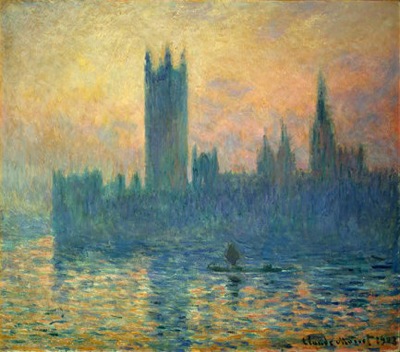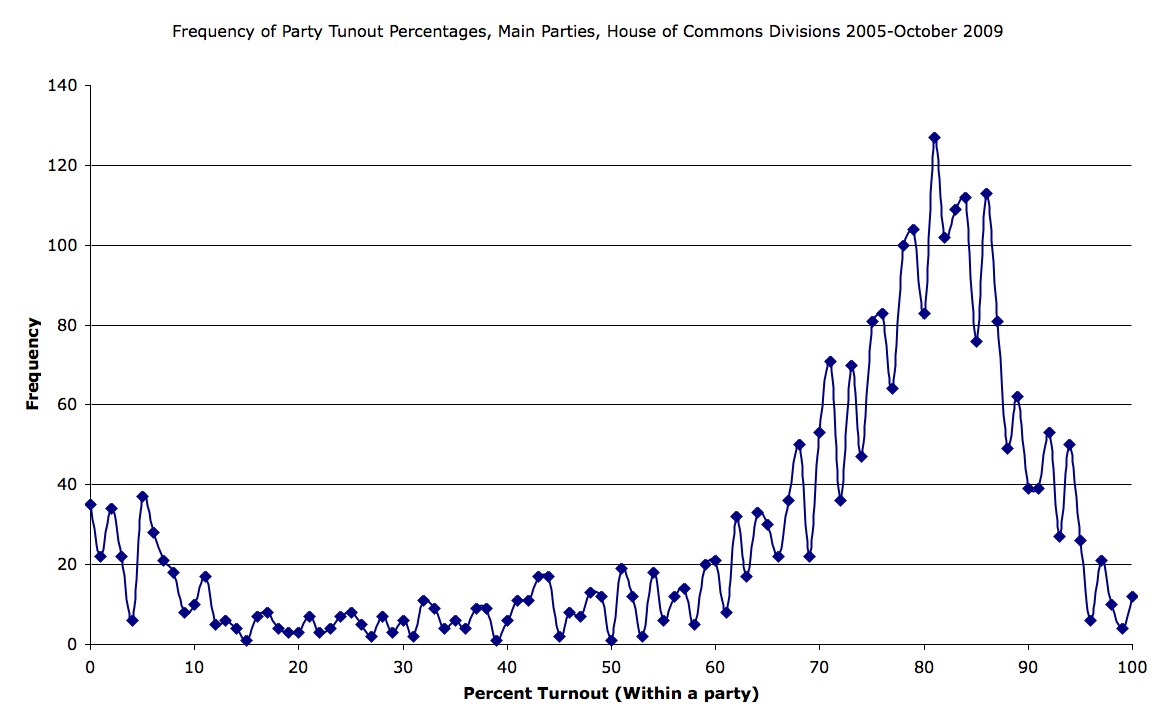
I’ve created an interactive table showing all House of Commons votes since the last general election. Using this it is possible to sort the votes in a wide variety of ways. Instances where it appears that a party is abstaining from a vote, and where a party is split on an issue, have been highlighted. The data is derived from Public Whip and is automatically kept up to date.
Despite Parliament itself and other publicly funded bodies like the BBC having large staffs and budgets to communicate what our elected representatives do on our behalf in the House of Commons I could not find answers to questions such as the following anywhere on the internet (answers can now be viewed via the links to my table of votes):
- Which votes have been the closest?
- Which votes have been won with the greatest majority?
- Which issues have split parties?
- Which votes have seen the greatest turnout, accounting for abstentions?
- Which votes have MPs from particular parties abstained from en-masse?
- Which votes have seen MPs vote most strongly along party lines?
Split Parties (View List)
In over half of the votes more than 99% of MPs voted along party lines so split parties have been rare. In only 7.7% of votes less than 80% of a party’s voting MPs voted in line with the majority of that party.
The votes where parties were split were only on a small number of subjects:
- House of Lords Reform.
- The Human Fertilisation and Embryology Bill.
- House of Commons matters, eg. timetabling motions.
- Matters affecting MPs as individuals such as MPs pay and keeping MPs’ addresses secret.
In addition The Labour Party was split on questions relating to replacing the Trident nuclear deterrent. [1][2].
Table Showing Frequency Of Parties Being Split in a Vote
| Conservative Party Split in Vote | 61 (View List) |
| Liberal Democrat Party Split in Vote | 33 (View List) |
| Labour Party Split in Vote | 26 (View List) |
There were five votes where all main parties were split; three on MPs salaries and two on the Human Fertilisation and Embryology Bill.
A party is marked as “split” if less than 80% of those MPs from that party who vote do so in line with the majority of that party.
At the time of writing in 85% of votes the party with the lowest unanimity has more than 80% of its MPs voting in line with the majority of that party.
Whole Party Abstentions (View List)
Table Showing Frequency of Whole Party Abstensions
| Conservative Abstentions | 105 (View List) |
| Liberal Democrat Abstentions | 18 (View List) |
| Labour Abstentions | 2 (View List) |
An abstention is assumed if less than 10% of the MPs in a main party vote in a division yet more than 50% of the MPs in one of the other main parties do vote.
This strategy can be justified by the below graph showing the frequency of each percentage turnout in the votes in the House of Commons between May 2005 and October 2009:

Abstentions can be seen as the increase in frequency below about 10%. Selecting all votes where less than 10% of one party votes catches those votes which are generally very poorly attended. I have only flagged a vote as one where a party is abstaining where at least one main party has a turnout placing it in the normal distribution centring on 80%.
Identifying abstentions enables a corrected turnout figure to be calculated for instances where MPs might well have abstained had that option been open to them. I think sorting the divisions list by this “corrected turnout” provides better sorting of the divisions by “importance” than sorting merely by overall turnout. The “corrected turnout” assumes that the fraction of MPs actively abstaining would be the same as the fraction of MPs voting in the party which saw the greatest fraction of its MPs vote in the division.
Reasons for abstaining can include not thinking the decision ought be made at that point in time. This appears to be the reason the Conservatives abstained in a vote on the 3rd of November 2009 on who ought appoint senior civil servants in the Scottish Executive. The Conservatives supported the proposal to remove the power from UK ministers, but wanted the recommendations of the Commission on Scottish Devolution chaired by Kenneth Calman to be looked at as a whole.
The Conservatives abstained in another vote held on the 3rd of November 2009, this second vote was on the question of if staff at GCHQ should come under the jurisdiction of the Civil Service Commission, a move which if accepted would have ensured employment related safeguards applied to GCHQ staff and would have required appointments to the agency to be made on merit (rather than on say political grounds). Conservative MP Oliver Heald spoke in favour of the amendment to ensure statutory protections applied to GCHQ staff, he said: “I believe that there is no real reason why the amendment should not succeed”, but when it came to the vote he, and his fellow Conservatives abstained. Highlighting these cases enables MPs to be asked to explain their actions. Reasons for abstentions are rarely given during debate. If Mr Heald replies to an email I’ve written to him asking why he didn’t vote in-line with what he said I’ll post an update in the comments.
Recording Abstentions
A proper means for MPs to record abstentions would I think be useful. It probably doesn’t need any formal change in procedures. If MPs wishing to abstain and make it known they’d abstained simply said what they were intending to do at the end of the debate, and insisted it was recorded in Hansard a new procedure would emerge. (Voting “Both”, isn’t quite the same as an abstention, as it might be taken to imply support for both options in instances where that makes sense). In the Scottish Parliament it is already possible to formally abstain (they have a button for it on their desk).
4 responses to “Looking at How MPs Vote”
Oliver Heald, the MP who said there is no reason the amendment should not succeed but failed to vote for it, has replied to me to say:
The Minister, Angela Smith, did not say that the separate acts which deal with, and give protections to, intelligence service staff provide the same protections as would be provided by the amendment.
All the Minister did was give assurances; Mr Heald had said that he was seeking stronger – statutory protection; he himself said during the debate: “It is not good enough for her to say, ‘I am making an assurance’,” * Despite saying that it appears that he assurance was sufficient to deter Mr Heald and the rest of his party from voting on the question.
A reason he won’t give is that of the convervatives not wanting to appear to support the libdems in any way, or to give the appearance that they think the libdems are ever competent about anything, or ever come up with good ideas worth supporting.
This will often be the real motivation. It’s then very easy to rationalize it in the way he has done it in the nit-picking way he has done here.
“under our system a bill is considered many times…” All the more reason to vote for it in this case for the broad position, and add the nuances later!
You can only argue against it by exhibiting another example of an amendment which they did vote for that has a similar degree of flawedness. But then they’ll say that’s a different subject.
Perhaps we ought to start coding up more formally which MP/party proposed the amendment in order to demonstrate the statistical pattern.
Julian, in many of votes with Conservative abstentions the Lib Dems do have high turnouts.
If some one desires to be updated with newest technologies then he must be pay a visit this website and be up to date all the time.|